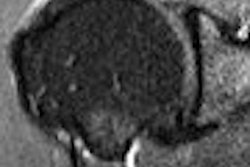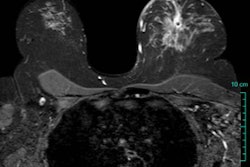MRI offers powerful diagnostic information for various diseases and conditions. But no matter how useful the modality is in the abstract, if patients can't relax enough to allow the scan to be performed, it won't have any practical effect.
Researchers in the department of radiology at the Charité Campus Mitte in Berlin conducted a study evaluating how much claustrophobia was mitigated by using an MRI scanner with 97% acoustic noise reduction and a short and wide magnetic bore (1.5-tesla Magnetom Avanto; Siemens Medical Solutions, Erlangen, Germany) versus a conventional scanner (1.0-tesla Magnetom Impact Expert Plus; Siemens). Dr. Marc Dewey presented the study's findings at the 2007 RSNA meeting in Chicago.
One to fifteen percent of all patients who undergo MRI experience claustrophobia, with an average of 2.3% having claustrophobia that hinders the exam from being performed, according to Dewey. And since these figures are based on studies of fewer than 18,000 patients, the number of people affected by claustrophobia during MRI is probably much higher.
"More than 30 million MR scans are conducted each year around the world, but with the small study populations that have been used, we actually don't know the real impact of claustrophobia on patients," Dewey said.
The study included 55,734 consecutive patients over the course of eight years, from 1997 to 2005. Dewey and his colleagues performed multiple logistic regression analysis to adjust for the nonrandomized design of the study and calculate adjusted odds ratios.
Women, middle-aged people, and patients undergoing head-first examinations demonstrated the highest levels of claustrophobia, Dewey said. Of the total cohort, 42,998 patients had claustrophobic reactions on a conventional MR scanner, while 12,736 patients had claustrophobic reactions on an open scanner. Sedation was necessary in 610 patients and was effective: only two of those 610 were unable to continue with the exam despite the sedation.
The group found that the rate of claustrophobic reactions was lower with the open MRI scanner, at 0.7%, than it was with the conventional scanner, at 2.1%.
"The claustrophobia rate was reduced by a factor of three just by using this patient-friendly scanner," Dewey said. "With the conventional scanner, we had one claustrophobic event each day, but with the modern scanner, we have one event every 30 days."
Why is it important to reduce claustrophobia? Because claustrophobia affects patients as well as the efficacy of the practice.
"Bringing the patient into the focus of medical innovations has the potential to reduce costs, improve workflow, and increase clinical utility of MRI imaging," Dewey said.
By Kate Madden Yee
AuntMinnie.com staff writer
December 19, 2007
Related Reading
University of Illinois completes 9.4-tesla MR trials, December 6, 2007
Back to the present: VA updates MRI design guide, part II, December 5, 2007
Back to the present: VA updates MRI design guide, part 1, December 3, 2007
DRA vs. MRI: Why demographics will keep the modality alive, November 8, 2007
Joint Commission MR safety surveys: Moving past the fire extinguisher, August 29, 2007
Copyright © 2007 AuntMinnie.com



















